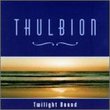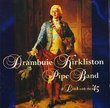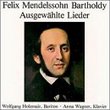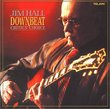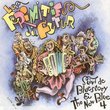| All Artists: Louis Couperin, Laurence Cummings Title: Louis Couperin: Harpsichord Suites Members Wishing: 0 Total Copies: 0 Label: Naxos Original Release Date: 1/1/1994 Re-Release Date: 5/1/1995 Genre: Classical Styles: Forms & Genres, Improvisation, Historical Periods, Baroque (c.1600-1750) Number of Discs: 1 SwapaCD Credits: 1 UPC: 730099592222 |
Search - Louis Couperin, Laurence Cummings :: Louis Couperin: Harpsichord Suites
 | Louis Couperin, Laurence Cummings Louis Couperin: Harpsichord Suites Genre: Classical
|
Larger Image |
CD DetailsSimilar CDs
|
CD ReviewsExcellent sound quality but wobbly performances Alan W. Pollack | Brighton, MA USA | 08/16/2000 (3 out of 5 stars) "The bargain price, excellent sound quality, rarity of the repertoire, and the use of an instrument tuned to the antique style of "mean tone" temperament on this recording make it attractively tempting.A frustrating drawback, alas, is that the playing is very wobbly with tempo and rubato fluctuating almost continuously. While the latter approach is appropriate to the Prelude-like movements on the program (after all, Couperin wrote these without specifying rhythmic or metrical values!), it is neither required nor appropriate at all for the dance movements." The Harpsichord Music of Louis Couperin Robin Friedman | Washington, D.C. United States | 04/01/2006 (5 out of 5 stars) "I love the music of the French harpsichord composers. This music for the queenliest and most elegant of instruments combines beauty, stateliness and grace with flights of fancy and imagination. This CD on Naxos was recorded in 1993 and features the music of Louis Couperin (1626-- 1661). The uncle of the more famous Francois Couperin, Louis Couperin was a musician in the court of Louis XIII and himself the composer of highly innovative works for the harpsichord and other instruments. The harpsichordist Lawrence Cummings performs his music idiomatically on this CD, using a period-style instrument with period tuning. The use of period tuning means that some intervals are tuned perfectly with the consequence that other intervals sound out-of-tune to modern listeners. The "equal temprament" tuning used uniformly today was championed by J.S. Bach. Early French harpsichord music derives from music for the lute with its arpeggios, stumming, and improvisatory character. Louis Couperin's "Tombeau d M. de Blancrocher" was composed to commemorate the 1654 death of a famous lutenist. This is an elegy in variation form, with many harmonic changes and shifts in register. The initial stately theme appears six times with increasing elaboration. This is a grand work of the harpsichord literature and a good place to start with Louis Couperin. The remaining works on the CD are in the form of dance suites. As they have come down to us, the opening preludes (some 13 of them) were all printed together while the remaining movements were arranged by key and subsequently grouped into suites. There are four suites on this disk, in D major, A minor, C major, and F Major. Couperin's most original moments are found in his preludes. These are free-form, improvisatory pieces which developed from the strumming and arpeggios that lutenists typically did in process of tuning their difficult instruments. Most of Louis Couperin's preludes are written without bar lines, emphasizing their improvisatory and fanciful character. But some of the preludes include both measured and unmeasured sections. Thus, the Prelude of the Suite in A minor, titled, "Prelude a l'imitation de Mr. Froberger" includes a slow, linear opening and close, both of which are unmeasured with a middle, faster fugal section based upon a tocatta of the Italian composer, Froberger. The prelude of the suite of F major is short but full of marked changes, beginning with a slow introduction, transitioning gracefully into a faster, gigue-like section, and concluding with a grand arpeggiated gesture. In addition to the preludes, I also enjoyed Couperin's movements in variation form, the chaconnes of the suites in D major and F major and especially the long, elaborate passacalle which concludes the suite in C major. Louis Couperin's suites include a good deal of contrasting material within and among the various movements. The A minor suite includes an especially ornate sarabande. Interspersed in each of the suites a short, lively movements juxtaposed with the more stately sections. Thus, the D major and the F major suites each include a fast court dance known as the gailliarde. The A minor suite includes an unusually light courante styled "Courante La Mignonne" together with an unusual, flashy movement called "La Piemontoise". The F major suite includes a gigue and a short, showy piece called "Branle de Basque". I am pleased that this CD has attracted several reviews on this site, some of them recent. I hope the attention signals a growing interest in the harpsichord and in the composers who wrote for it. Robin Friedman" Exquisite sound & expression ! melomanio | 07/13/2005 (5 out of 5 stars) "There are very few harpsichords available on CDs that sound so lovely like this one ! L Couperins music can be the most beautiful french music if it is played on an appropriate ,excellent instrument. and the performance here by Mr Cummings is so perfect, passionate, fancinating that seeing the blank star on the item makes me uneasy . so i can no longer keep silent."
|

 Track Listings (26) - Disc #1
Track Listings (26) - Disc #1